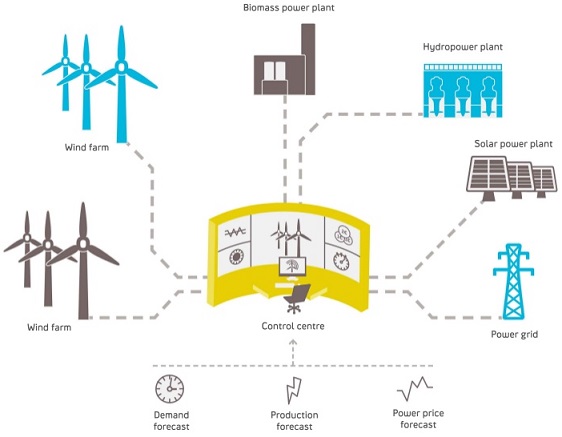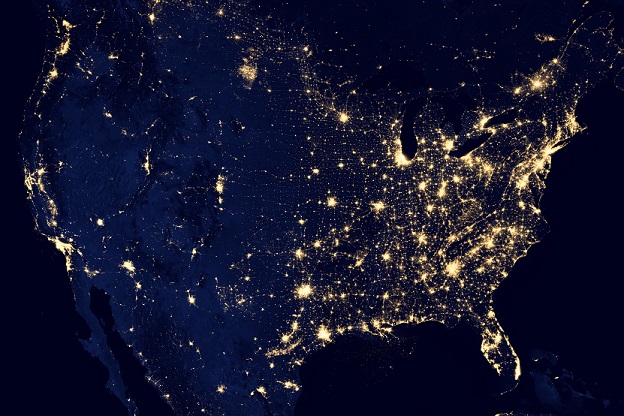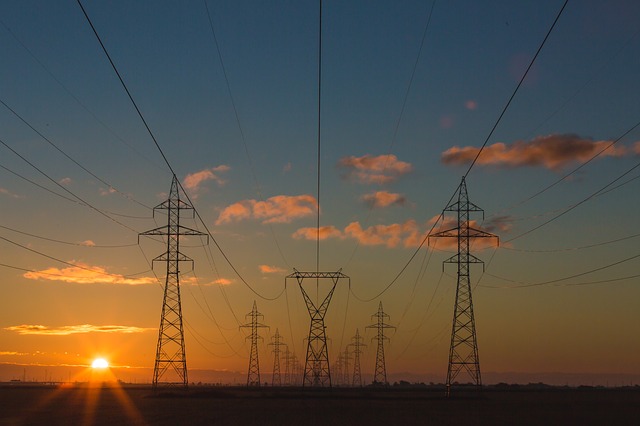Don’t Get Left in the Dark
Distributed generation means many things to many people.
To a utility company, it is extra capacity for the grid during times of peak electricity use.
For homeowners, it is a way to assert energy independence.
And for public agencies and emergency planners, it is a way to build resilience to the inevitable disruptions to our electricity distribution infrastructure.

Source: BMWi; Statkraft Markets GmbH
Distributed generation refers to technologies that generate electricity at or near where it will be used. These projects come in all sizes, and use resources such as solar, wind, natural gas, biomass combustion, and hydropower. The system can serve a single facility, such as an emergency shelter, or it can be part of a microgrid to power a college campus or a hospital. Distributed generation can also feed the main power grid, but many of the public projects that IMS has recently been covering are utilizing the technology to diversify power supplies, improve reliability, and create redundant systems to better deal with power outages from disasters.
“Use of distributed generation has increased for a variety of reasons,” the US Environmental Protection Agency reported, citing the importance of cost-effective renewable technologies and the value of back-up protection during power outages. “Several states and local governments are advancing policies to encourage greater deployment of renewable technologies due to their benefits, including energy security, resiliency, and emissions reductions.”
There is already hundreds of gigawatts of distributed generation capacity in the United States. Today’s trend, however, is the use of this technology by public agencies to send power to microgrids and build redundancy for local power infrastructure.
IMS has seen an increase in these distributed generation projects as agencies look to bolster their readiness and ability to respond to disasters. In 2014, IMS covered eight projects related to distributed generation and microgrids. In 2015 and 2016, there were approximately 20 projects each year. In 2017, however, IMS covered approximately 40 distributed generation and microgrid projects.
The timing is well justified. A study titled “Blackout: Extreme Weather, Climate Change and Power Outages” [PDF] found that weather-related power outages increased dramatically in the 2000s and that “a large majority of the major power outages and electricity disturbances that occurred from 2003-2012 were caused by severe weather.”
Last fall, Hurricane Harvey left more than a quarter million Texas residents without power. A week later, Hurricane Irma moved through Florida and the storm knocked out power to 6.7 million customers.
“Many cities struck by Harvey and Irma face a long road ahead to rebuild their electricity infrastructure,” according to an article titled “The Importance of Distribution-Scale Solar for Grid Resilience” by the Rocky Mountain Institute. “As cities and utilities rebuild, there’s an option to look toward solutions that provide grid resilience, such as distributed energy, especially solar and battery storage sited on distribution grids.”

Source: NASA
Puerto Rico is still reeling from damage to its power infrastructure four months after Hurricane Maria. And New England and Mid-Atlantic states remember when Superstorm Sandy caused power outages for 7.9 million utility customers.
Those are expensive and dangerous experiences for which cities, states, and utilities are loath to repeat. Indeed, when the grid goes down, it can become a crisis situation for hospitals, treatment plants, jails, and pumping stations. And so, as the technology improves and becomes more affordable, distributed generation systems are becoming an important component of emergency planning.
“Distributed solar photovoltaic systems have the potential to supply electricity during grid outages resulting from extreme weather or other emergency situations,” according to a research paper by the National Renewable Energy Laboratory [PDF]. “As such, distributed PV can significantly increase the resiliency of the electricity system.”
Microgrids go hand in hand with big-picture distributed generation. In the same research paper, the NREL described the benefits of microgrids: fully customizable, improved reliability, cost-efficient, and with environmental advantages. “In the past, microgrids have been of interest primarily for military bases and remote communities, but the application of microgrids is rapidly evolving. Cities, communities, and public institutions represent the next phase of microgrid adopters, largely driven by resiliency concerns,” the agency wrote.
IMS is covering distributed generation and microgrid projects in all phases: planning, design, project delivery by developers and design builders, and post-construction inspections.
The Township of Middletown, NJ, released an RFP in October 2017 for a microgrid feasibility study to evaluate local distributed energy needs for critical facilities during times of electricity grid outages. The project included 19 structures with 16 considered critical per FEMA Categorical Classification Standards (IMS 398671-2).
Similarly, the County of Hudson, NJ, sought a consultant to conduct a one-year feasibility study for a Town Center distributed energy resource microgrid (IMS 398975-1).
These projects can also be part of Integrated Resource Plans by public utilities. The Sacramento Municipal Utility District in October 2017 sought a consultant to provide support for integrated distributed energy resources planning efforts and evaluating technical and economic impacts of distributed generation (IMS 401347).
And the US Department of the Navy recently sought consultants for research and development project proposals on distributed generation to improve its electrical systems (IMS 401280).
IMS is covering distributed generation projects that are delivered by developers and through the design build process. The West Boylston Municipal Lighting Plant in Massachusetts chose the design build delivery method and a power purchase agreement for a solar photovoltaic distributed generation system and interconnection facilities (IMS 339021). However, the City of Bowie, TX sought a developer for a .99-mW distributed generation solar farm (IMS 338415).

Of course, energy engineers can be heavily involved in distributed generation projects. For example, the City of Fontana, CA released an RFP for a consultant to provide evaluation, design, construction, and/or management of distributed generation facilities and grid islands, energy efficiency measures and programs, and alternative and renewable energy facilities (IMS 407124).
When it is quality assurance time, these projects follow a familiar route. IMS recently published an Advanced Notice for the Village of Greenport, NY, which may be seeking a consultant to provide construction administration and construction inspection services for a microgrid and electrical distribution system project (IMS 408917).
The power grid will continue to face disruptions, whether it is from a powerful storm, a terrorist act, or even a rodent chewing through a critical wire. Public agencies know this, and they are incorporating power resiliency and redundancy into their infrastructure via distributed generation and microgrids. At the same time, agencies are taking advantage of renewable resources to diversify the actual power supplies.
Distributed generation means many technologies, many applications, and many benefits to many people.

